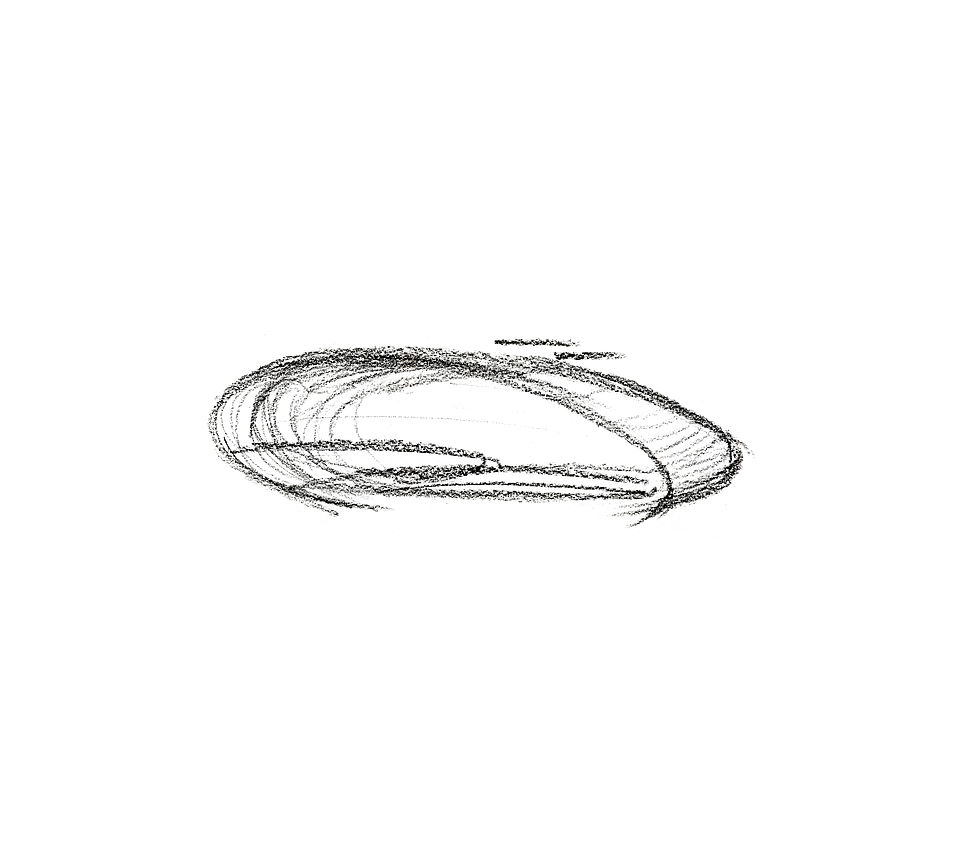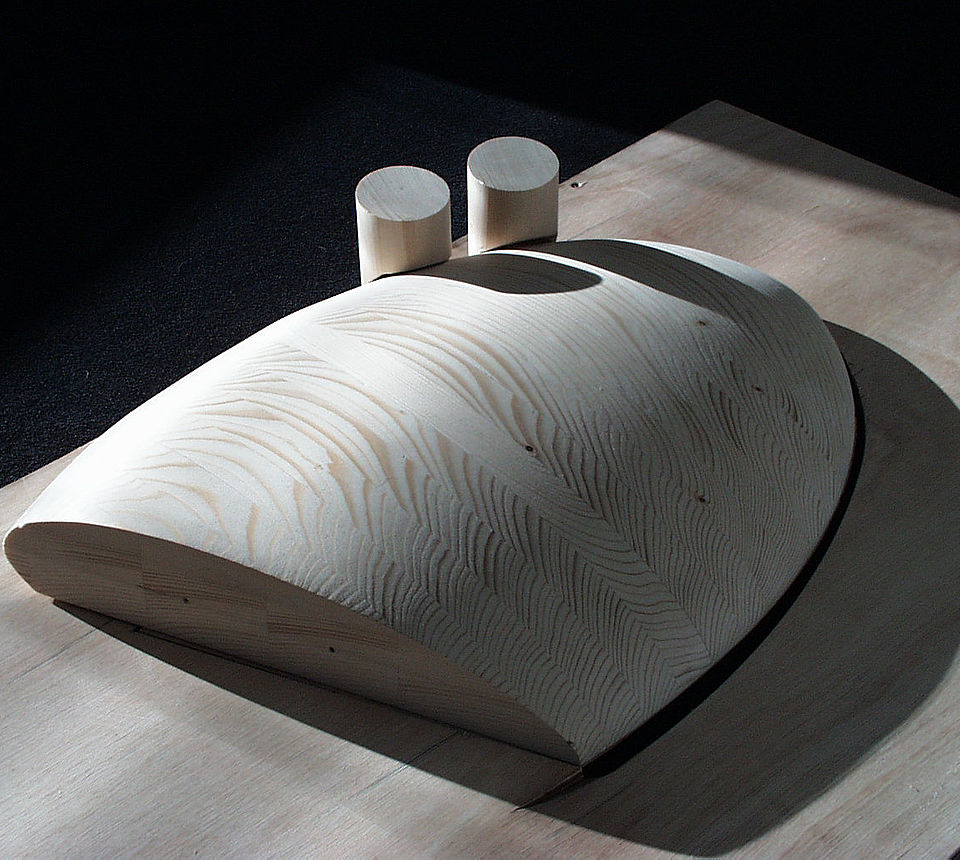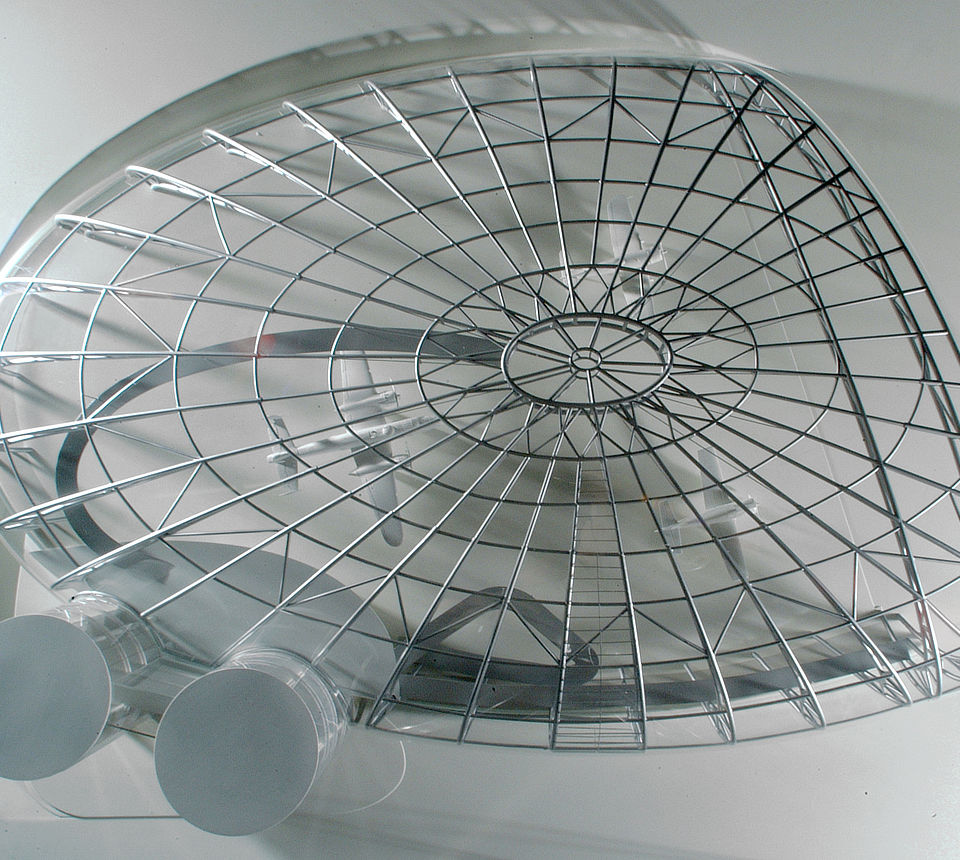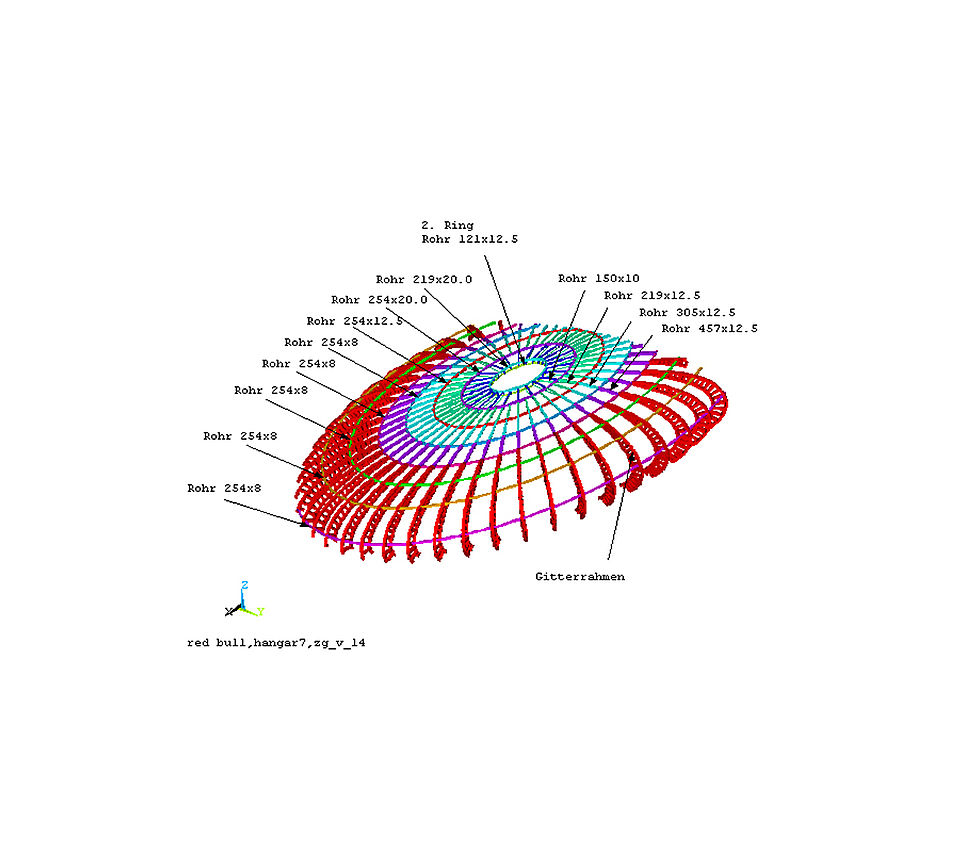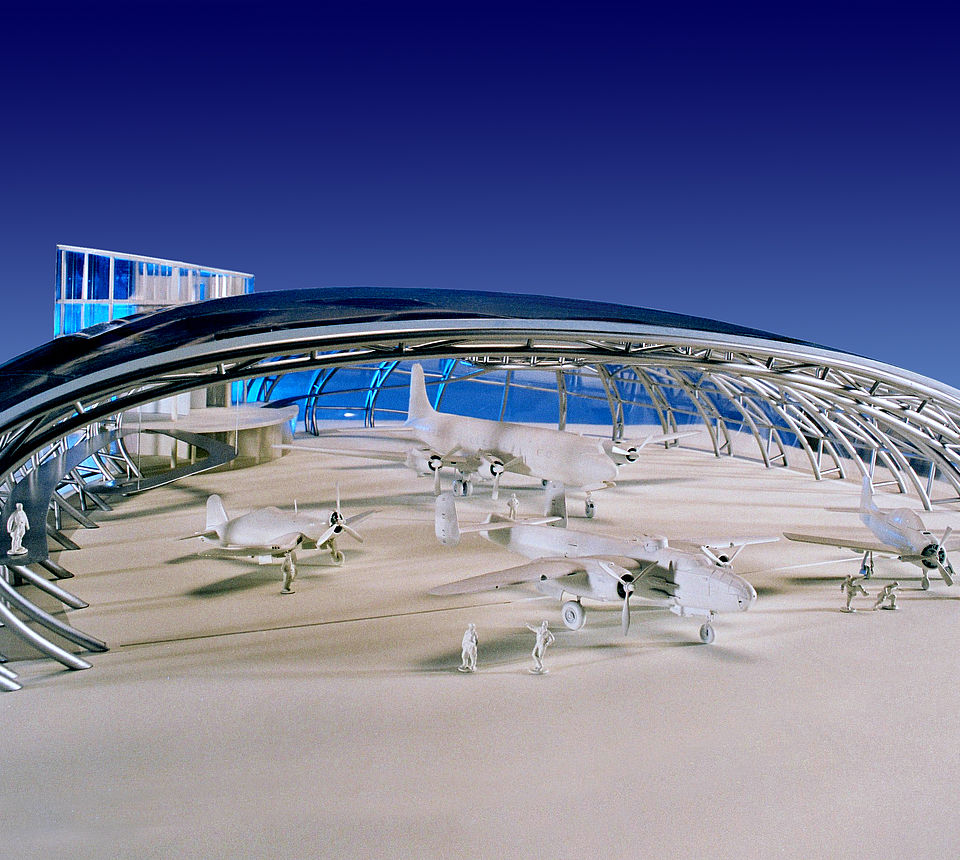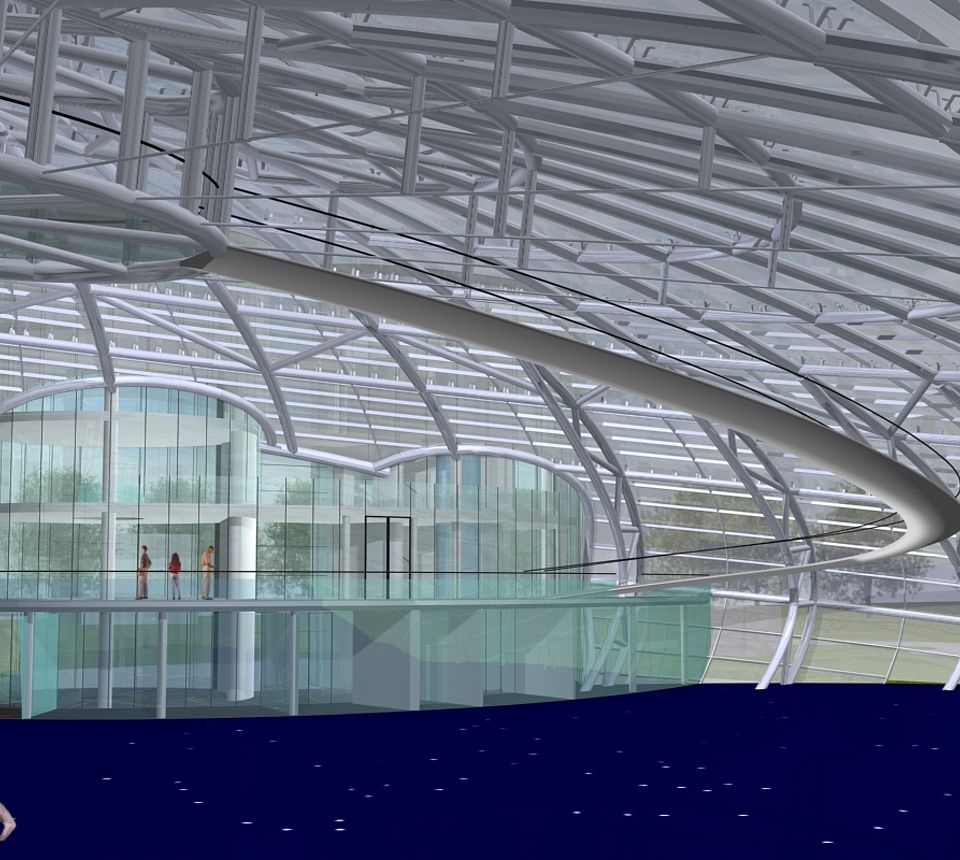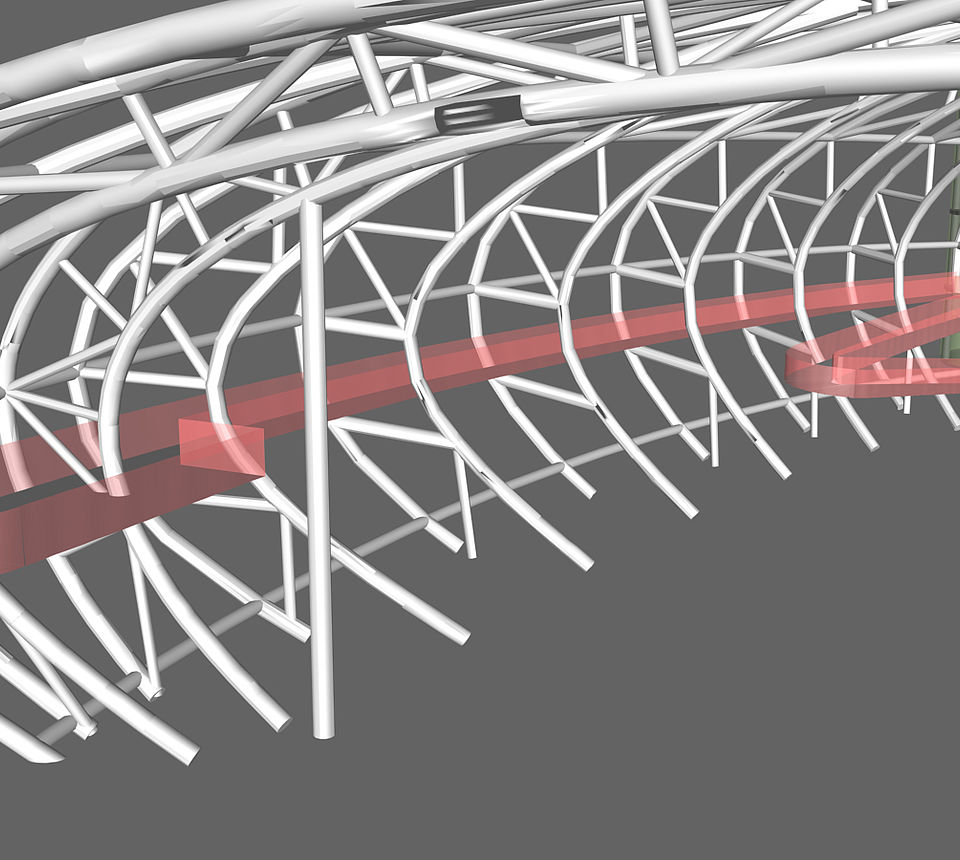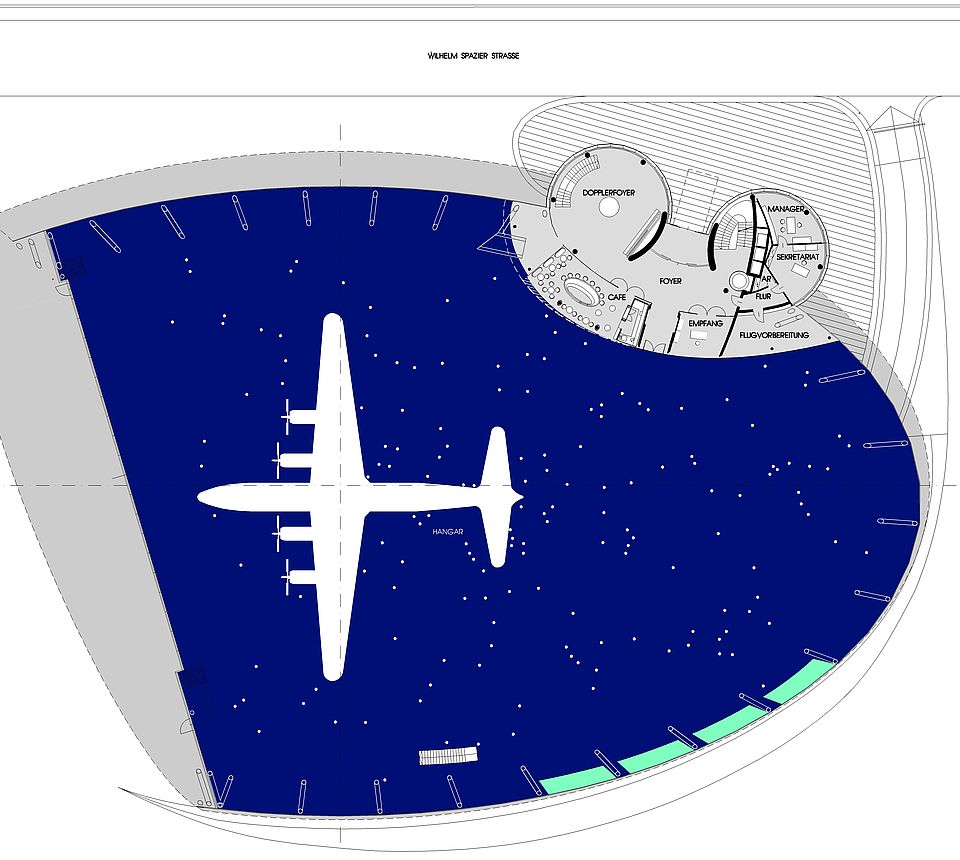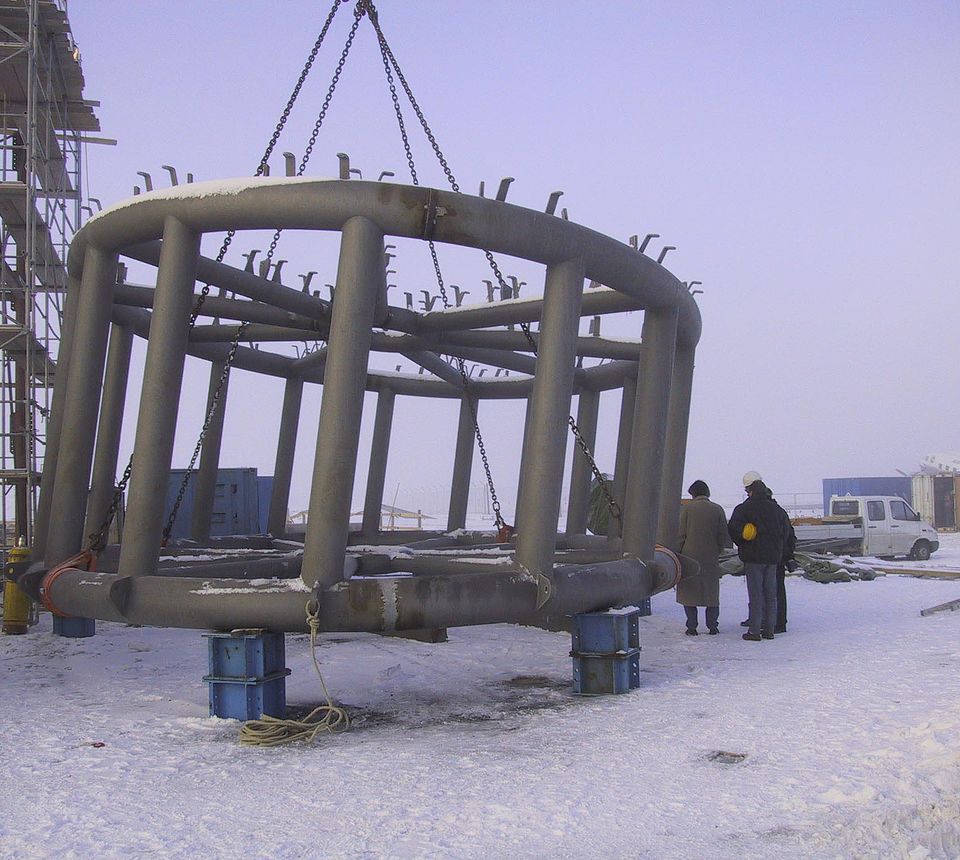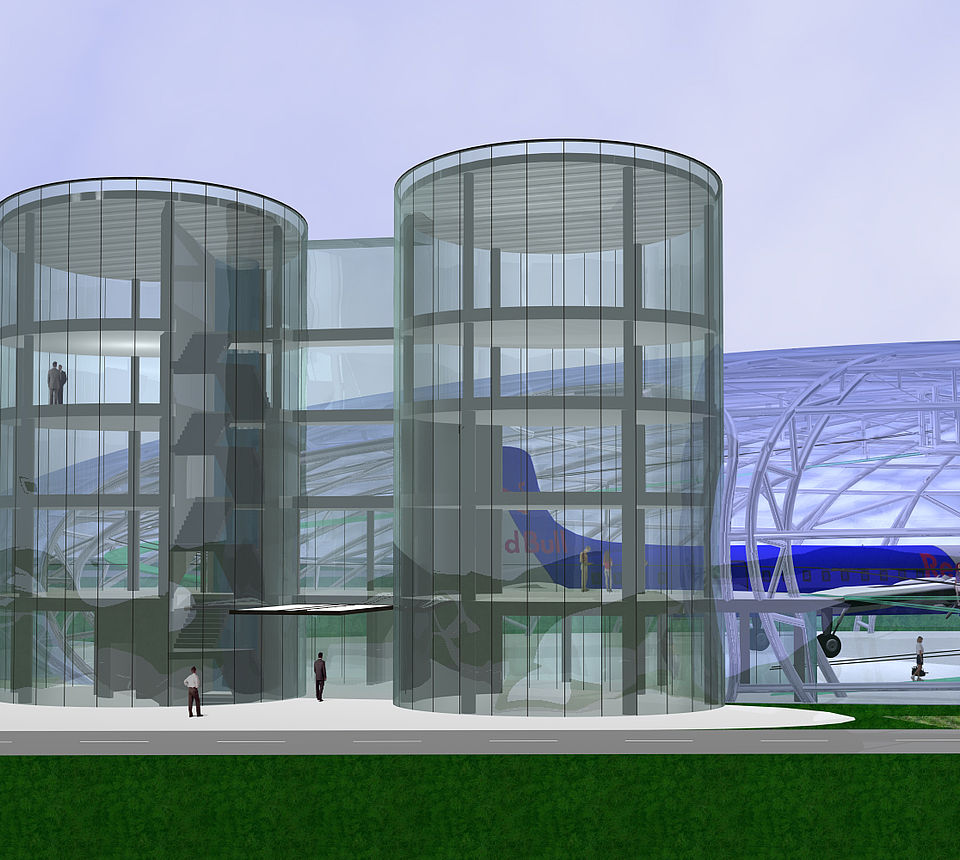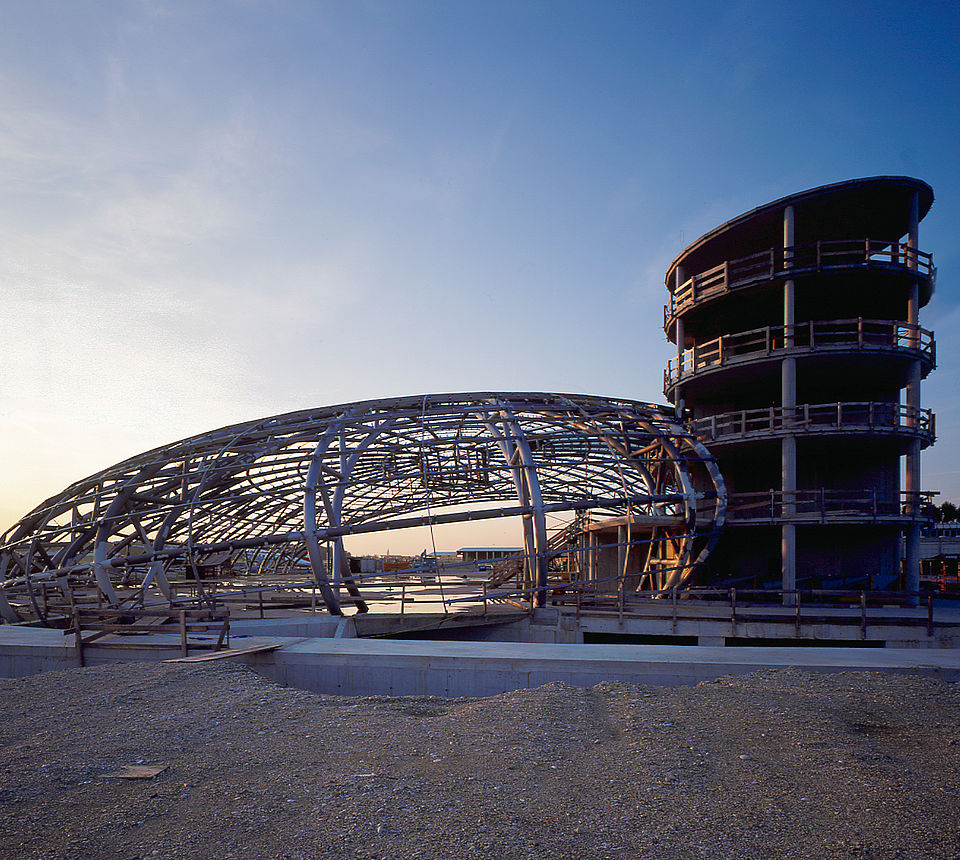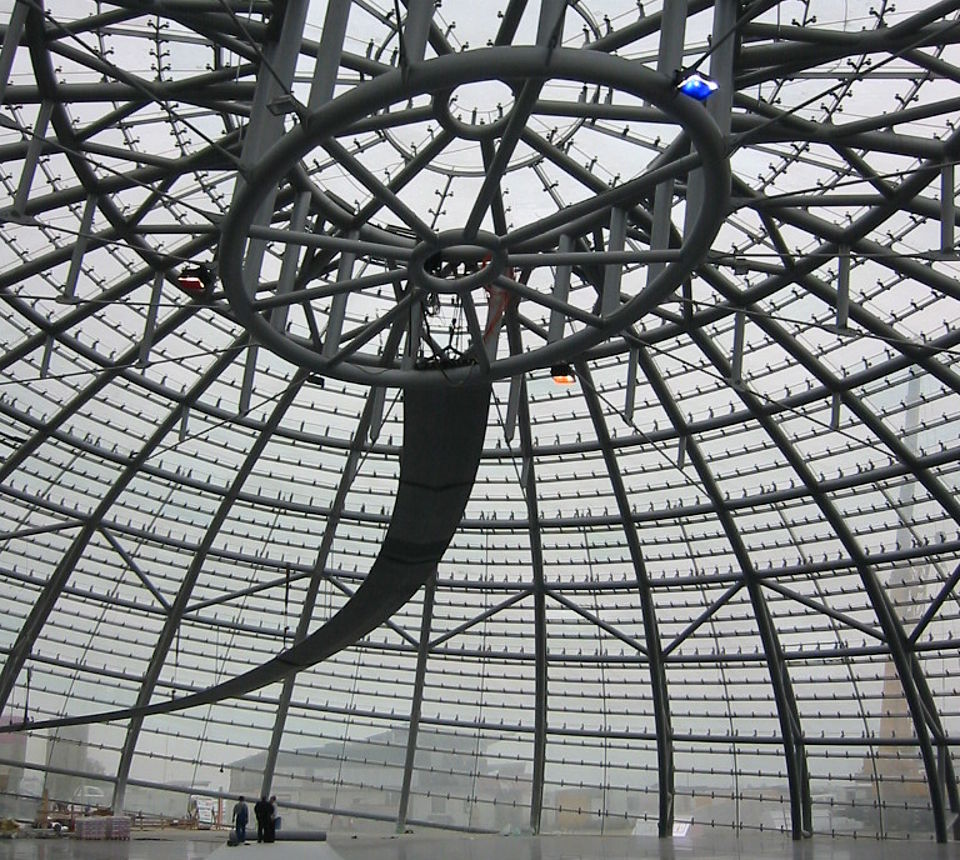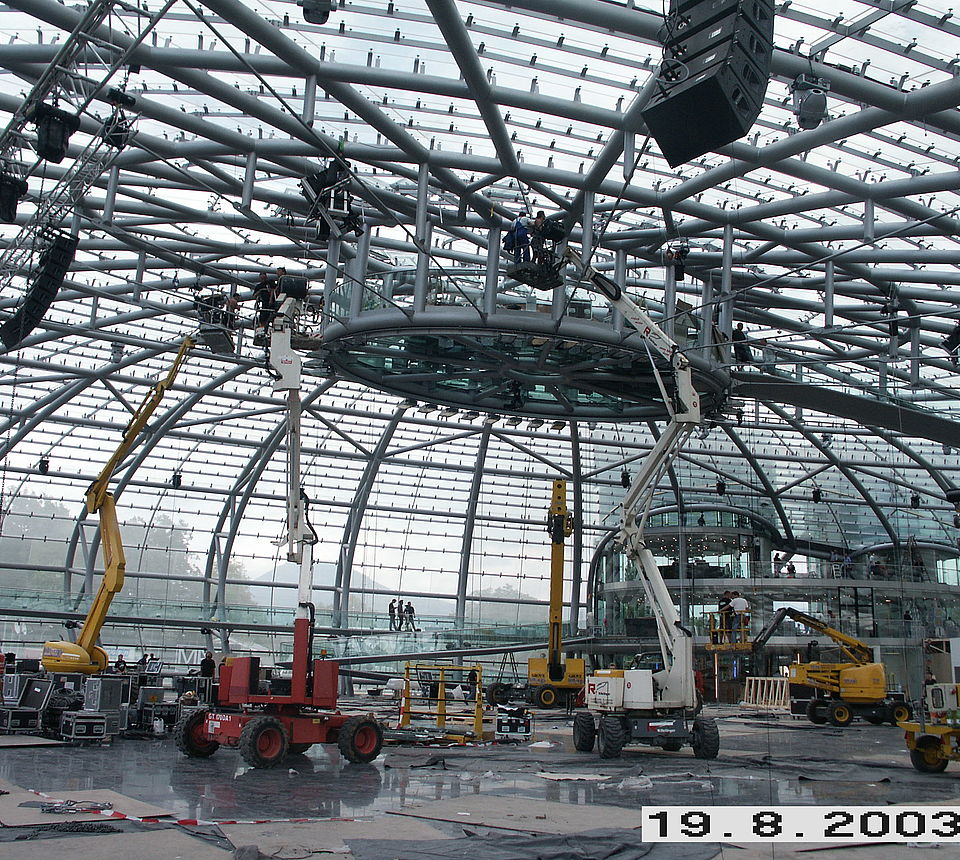Concept & design philosophy
During the architectural implementation of the idea, the aim is not just to build a hall without edges but, rather, to create a room that appeals to all of the visitor’s senses while also conveying the Red Bull spirit and evoking associations with flying.
Form finding & support structure
Based on the sketch, computer renderings are created to scale, and the effect of the form is assessed from different angles. The form is then further optimised in a simple working scale model made of wood and built up in layers. At the same time, the requirements and dimensions for the towers are finalised.
Planning hangar door
With the largest aircraft (the Douglas DC-6B) in mind, the aim is to develop a door that is 40 m wide and 7 high – and with a flat at the top, so that the tail fin of the Douglas DC-&B can fit through.
Form finding & support structure
In the end, the decision is made to develop a centred support structure, as this will allow the design philosophy to be implemented in the most sustainable way.
Feasibility study
Since no one has ever created such a shell structure in this form – the clear span of an area from 67 to 100 metres – especially not with the chosen centred structure, the first stage of putting the plan into reality involves commissioning a feasibility study to assess whether and how a steel support structure can be built in accordance with the requirements profile.
Feasibility study
Two international offices (Stuttgart and London) provide calculations and design considerations which confirm that the project is indeed feasible.
Feasibility study
In a wind tunnel, the shell form is assessed from a technical perspective and data is acquired for the subsequent static calculations.
September - October 2000
Model & presentation
The project development status is shown using plans and a highly realistic model. The model provides greater insights into the interior effect of the building, which leads to the decision to design all further planned installations as a hangar.
Development of supporting structure
The architectural quality of this project would depend largely on the aesthetics of the supporting structure, in the traditional sense of civil engineering. A decision is made to use steel, as it is the only material that can provide the desired elegance and lightness.
Development of supporting structure
With the requirements in mind – especially the radial supporting structure – the design is perfected in close collaboration with Waagner Biro and with numerous complex calculations on the powerful computer at the technical university, and the dimensioning of the tube diameters is minimised.
January - March 2001
Planning bridges & ramps
During the advanced planning stages of the support structure, a critical area in the upper shell is identified. To stabilise and reinforce the structure, a ring with low radial stress is developed. This gives birth to the idea for the “Threesixty Bar”, in which a glass floor is incorporated between the reinforcing ring. Access to this place on the exposed part of the hangar is provided by a seemingly free-floating ramp with a pleasant incline.
Planning bridges & ramps
On the first floor, a terrace is incorporated into the hangar space in front of the towers. It is accessed via a winding ramp. A bridge creates an additional connection to the outdoor area. The self-supporting bridges and ramps that span the room create a special, three-dimensional spatial.
Lighting
During normal use, the inside of the hangar is bathed in a diffused light in which only a few exhibits/aircraft are illuminated by spotlights in order to accentuate the space. The basic lighting is provided by lamps moulded into the floor and arranged in line with the constellation of the stars on 22 August 2003, the day on which Hangar-7 first opened its doors.
Start of assembly & steel
The vertex structure/central ellipse (reinforcement, Threesixty Bar), as the largest and heaviest individual component of the steel construction, is delivered in two pieces and assembled (welded together) on the construction site. It is then lifted onto a pre-prepared frame and measured three-dimensionally with utmost precision.
Roof shell
Glass is the obvious choice for the roof shell if the desire to create a light, transparent envelope – a naturally bright room – is to be fulfilled. Due to the special form, based around a centred support structure, each pane of glass has a different geometry. A layer is screen-printed onto the outer surface in order to reduce translucence and external glare.
Towers & glass cylinders
Two glass cylinders are designed for the special features (e.g. bar, restaurant, lounge, administration). They also form part of the static concept and serve to reinforce the entire support structure horizontally.
Start of assembly & steel
On the opposite side of Hangar-7, the construction of Hangar-8 (maintenance hangar) gets underway.
May - July 2002
Finalisation of steel & glass construction
The shells of the towers are completed. After the steel support structure has been provided, the glazing work can commence. It has to be carried out section by section, using a precisely calculated laying pattern.
Glazing work starts.
Bridge construction
The final phase of the steel construction involves installing the bridges. The elements, prefabricated in a workshop, including all fittings, are hung up inside the steel support structure and welded torsion-free from the air.
February - March 2003
Final assembly & cleaning
This work flows seamlessly into the preparations for the grand opening.
Opening
Opening: 22 August 2003 - Hangar-7 becomes a landmark at Salzburg Airport, offering a fascinating blend of progress and nostalgia, of technology and emotion. And the senses are further stimulated by the various culinary options.
© Red Bull Hangar-7 GmbH - all rights reserved
